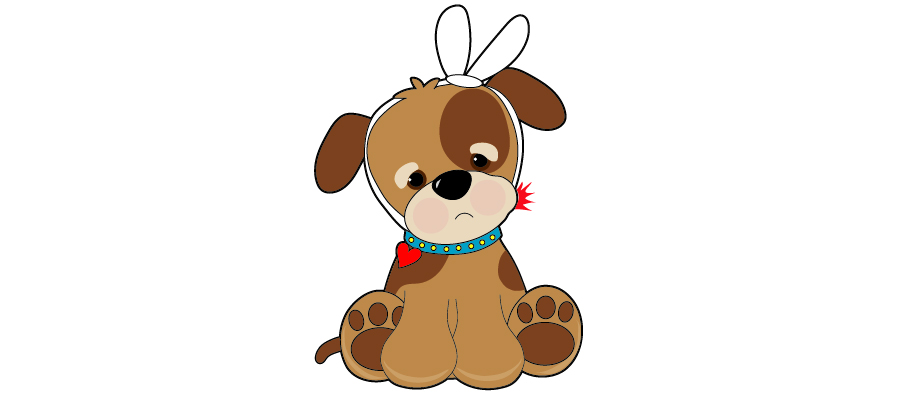We talk a lot about periodontal disease, and the importance of good dental health for all pets. And for good reason, it is one of the most common medical diseases for pets in America. It’s estimated that by the age of three, 80% of dogs have some sort of active dental disease. If dental disease persists long enough, your pooch is in real danger of getting an abscessed tooth.
An abscessed tooth is an enclosed pocket of infection that forms around a tooth. This can happen if your dog breaks a tooth, or if periodontal disease is present. The teeth that are most susceptible to infections are the upper carnassial teeth which happen to be the largest teeth in a dog’s mouth.
Unfortunately, dogs can’t tell us when their tooth hurts and, by instinct, they won’t usually show us they are in any pain from a tooth. So how can you tell if your dog is suffering from a tooth infection? Below are signs of an infected or abscessed tooth.
6 signs of a tooth infection/abscessed tooth
- Bad Breath – We’re not talking about “dog breath”, every dog owner knows what that smells like. What we are referring to is halitosis caused by an infection in the month.
- Decreased appetite – When it begins to hurt too much to eat, pets will slow or stop eating to avoid the pain. Rarely if every will a dog show outwardly that they are in pain when they eat.
- Swelling around the infection area or mouth – When one or more teeth become infected, swelling around the infected area is likely to occur. You pet will also pull away when you try to inspect the spot of infection.
- Only chewing on one side – If your dog loves to chew on bones or toys and then slowly starts to avoid one side of his month, its most likely due to a dental infection.
- Excessive drooling – Cats are usually the ones to drool more when they have an abscessed tooth compared with their canine counterparts.
- Increased scratching in the spot of infection – If you notice that your pet is excessively scratching at one spot of their face or nose, it’s because the infection is really bothering them.
Next Steps
While home prevention is always the best, there are no at-home remedies once a tooth becomes abscessed. Only a veterinarian can help your dog, cat, or any other pet that has an infected tooth, so get your pet in right away. Your veterinarian most likely prescribe an antibiotic and/or an anti-inflammatory medication. Next steps will be to get a full mouth radiograph (dental X-ray), extract the tooth, and do a full dental cleaning. But to be clear, your veterinarian should have the final say as to how to proceed with your pet’s health care.
Prevention
Once your dog’s pearly whites are shiny, preventive measures are going to be the best bet at keeping their teeth healthy. Daily brushing is the absolute best way to keep dental disease at bay. If your dog is positively too stubborn to get their teeth brushed, not all hope is lost. Dental chews, water additives, and prescribed dental diets are also great ways to keep the plaque at bay.
Talk to your veterinarian about what they recommend for your pet’s dental health, or if you have more questions about pet dental health, check out some of our other blogs.
